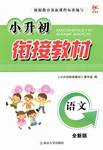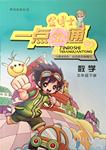题目内容
— Pity you missed the lecture on nuclear pollution.
— I____ it, but I was busy preparing for a job interview.
A. attended B. had attended
C. would attend D. would have attended
D
【解析】
试题分析:考查情态动词加完成式的用法。事情发生在过去,本來是要参加但是沒有参加。情态动词加完成式表示不存在的客观事实,表示一种愿望和要求。句意:很遗憾妳错过了关于能源污染的文化课。我本來要参加的,但是那时我正在忙着准备我的工作面试。故选D。
考点:考查情态动词加完成式的用法。

练习册系列答案
 学而优衔接教材南京大学出版社系列答案
学而优衔接教材南京大学出版社系列答案 小学课堂作业系列答案
小学课堂作业系列答案 金博士一点全通系列答案
金博士一点全通系列答案
相关题目